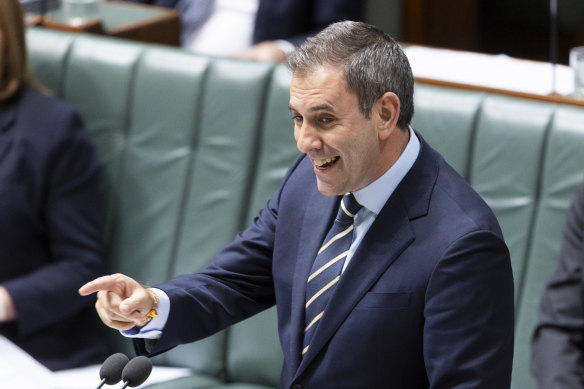
Save articles for later
Add articles to your saved list and come back to them any time.
Wage growth has climbed to a 14-year high after big pay increases for low-income earners and aged care workers, but it may be as good as it gets for most Australians as a softening jobs market takes the pressure off employers to lift pay rates.
In figures largely in line with Reserve Bank and market expectations, the Australian Bureau of Statistics on Wednesday reported the wage price index increased by 1.3 per cent in the September quarter, taking annual growth to 4 per cent.
Wages growth is at its highest rate in 14 years, but this may be as good as it gets.Credit: Gabriele Charotte
The quarterly increase was the largest in the 26-year history of the index while the annual result was the strongest since the March quarter of 2009.
Despite the strong annual result, it remains well short of inflation, which over the same year increased by 5.4 per cent. But in a positive sign for cash-strapped Australians, wages have grown faster for the past two consecutive quarters, the first time that has occurred since mid-2020.
Almost half of all private sector workers enjoyed a pay increase in the quarter, driven by the 5.75 per cent increase in the minimum wage that started from July 1 and a 15 per cent pay rise for aged care workers. About 13 per cent of workers received a pay rise of at least 6 per cent while just 3.3 per cent suffered a pay cut.
People in the nation’s lowest-paid jobs, such as hospitality or social services, received the biggest quarterly pay rises through the quarter.
Wages are growing fastest in Queensland where they lifted by 2.3 per cent in the quarter for an annual increase of 4.7 per cent. They are slowest in Victoria where they were up by 1.5 per cent in the quarter for an annual result of 3.7 per cent.
Treasurer Jim Chalmers seized on the figures as evidence the government’s intervention in key parts of the economy had delivered people a lift in their wages.
“Wages growth is a deliberate design feature of our economic plan. That is why we supported an increase to the minimum wage. It is why we supported decent pay for aged care workers and that was recognised in [Wednesday’s data] release,” he said.
Treasurer Jim Chalmers said wages growth was a deliberate design feature the government’s economic plan.Credit: Alex Ellinghausen
But shadow treasurer Angus Taylor said real wages for ordinary Australians were continuing to fall.
“Real wages going backwards, collapses in disposable income, the collapse in labour productivity – these are disastrous outcomes,” he said.
The Reserve Bank last week noted that businesses were suggesting that wages growth would peak around 4 per cent, with signs pressure on the jobs market was starting to ease.
Senior ANZ economists Catherine Birch and Madeline Dunk said the Reserve, which will hold its last meeting of the year on December 5, would not be worried by the wage figures.
They said recently lodged enterprise bargaining agreements were pointing to a slowdown in wages growth.
“Record quarterly WPI growth was widely expected but given it was partly driven by temporary factors, it will not concern the RBA as much as would be expected on face value,” they said.
NAB economists said the 1.3 per cent quarterly jump was likely a one-off, adding that wages are likely to grow by 0.9 per cent in the December quarter.
EY chief economist Cherelle Murphy said if the Reserve Bank was to lift interest rates it would be next year.
“Today’s result alone will not convince the Reserve Bank that another rate hike is needed at its December board meeting – given the increase in wages this quarter was within their expectations,” she said.
“The risks are tilted towards another rate hike in the new year, given the labour market remains tight and medium-term inflation expectations have ticked up a little.”
Cut through the noise of federal politics with news, views and expert analysis from Jacqueline Maley. Subscribers can sign up to our weekly Inside Politics newsletter here.
Most Viewed in Politics
From our partners
Source: Read Full Article

